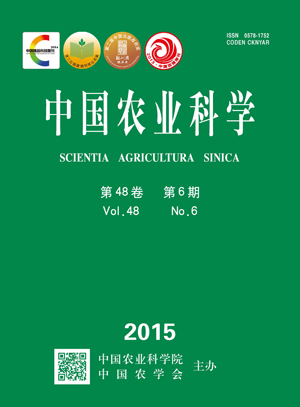-
Changes of JA Levels in Floral Organs and Expression Analysis of JA Signaling Genes in Lodicules Before Floret Opening in Rice
- HUANG Jun-bao, HE Yong-ming, ZENG Xiao-chun, XIANG Miao-lian, FU Yong-qi
-
Scientia Agricultura Sinica. 2015, 48(6):
1219-1227.
doi:10.3864/j.issn.0578-1752.2015.06.17
-
 Abstract
(
730 )
Abstract
(
730 )
 HTML
(
7 )
HTML
(
7 )
 PDF (465KB)
(
937
)
PDF (465KB)
(
937
)
 Save
Save
-
References |
Related Articles |
Metrics
【Objective】 The rice floret opening is driven by swelling of lodicules, and synchronized with filament elongation and anther dehiscence. The lipid-derived jasmonic acid (JA) is an important phytohormone in regulating plant reproductive development. In this study, the dynamic changes of endogenous jasmonic acid (JA) levels in floral organs and expression of JA signaling genes in lodicules were performed to investigate the roles of JA in rice floret opening. 【Method】 Floral organs (pedicels, lemmas and paleas, stamens, lodicules and pistils) of japonica rice Zhonghua 11 were harvested at 18 h and 0 h before natural floret opening. To quantify JA contents, 100 mg samples were ground in liquid nitrogen, extracted with mixed solution (methanol﹕water﹕acetic acid, 80﹕19﹕1, v/v/v), concentrated with nitrogen gas and filtered through 0.22 μm-pore filters, then measured using ultra-fast liquid chromatography-electrospray ionization tandem mass spectrometry (UFLC-ESI-MS). The rice total RNA was isolated with Trizol reagent. First-strand cDNAs were synthesized from DNaseI-treated total RNA using M-MLV reverse transcriptase. The expression patterns of genes related JA biosynthesis and signaling pathway were analyzed by real-time PCR using SYBR Green as dye. The rice GAPDH gene was used as endogenous control. The experiments were carried out with two biological replications. The statistical significance of differences between variants was estimated by t test.【Result】 At 18 h before floret opening, the highest JA level was found in pedicels (16.0 ng·g-1 FW), followed by lemmas and paleas (6.1 ng·g-1 FW), and with a very low accumulation in stamens, lodicules and pistils (less than 4.0 ng·g-1 FW). During floret opening, JA levels increased by 71% in lemmas and paleas, and sharply increased in pistils, stamens and lodicules (reaching 19.0, 77.2 and 52.4 ng·g-1 FW, respectively), contrasting with a 69% falling in pedicels. The JA levels in stamens and lodicules were significantly higher than that in other floral organ at floret opening, whereas the lowest JA level was found in pedicels. Consistent with the changes of JA levels, the expressionof OsDAD1, OsAOS1, OsAOC and OsOPR7 involved in JA biosynthesis pathway was sharply up-regulated in stamens and lodicules, and slightly increased in lemmas and paleas, but drastically down-regulated in pedicels during floret opening. Inconsistent with an increased JA level, no obvious expression changes of these JA biosynthetic genes were observed in pistils during floret opening. OsLOX2 and OsAOS2 had a high expression level in pedicels, lemmas and paleas, but a very low expression level in pistils, stamens and lodicules. With the rising of JA level, the expression of OsJAR1, OsCOI1b and 13 OsJAZs involved in JA signaling transduction was obviously up-regulated in lodicules during floret opening. Among them, the expression level of OsJAZ11 increased the most, and exhibited a 520-fold up-regulation. However, the expression level of OsJAR2, OsCOI1a, OsCOI1b, OsJAZ5 and OsJAZ15 was not increased in lodicules.【Conclusion】 The results of study showed that the occurrence of endogenous JA signature was tissue- and developmental stage- specific in rice floret. On the basis of the opening of rice florets induced by application of exogenous JA, the accumulation of JA and the differential activation of key genes in JA biosynthesis and signaling pathway in lodicules during floret opening suggested that endogenous JA was involved in regulation of lodicule swelling.









